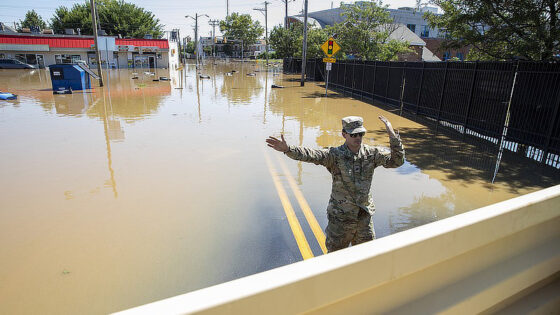In times of crisis, we are reminded of what’s most important. Friday’s hazardous chemical spill into Otter Creek, a tributary to the Delaware River, reminds us of our dependence on rivers and streams. The Delaware River watershed provides drinking water to more than 15 million people, as well as opportunities for fishing, canoeing, and scenic views.
While the chemicals involved in the recent spill are not currently the subject of any Stroud Water Research Center research projects, we do know that many of the signs and symptoms of ecological impairment are ones that people with little or no training can look for. Do you see dead fish? Does the water look cloudy or murky? Does it have a foul smell?
If you see something, report it. The Environmental Protection Agency and states including Pennsylvania (800-541-2050), New Jersey (877-WARN-DEP), and Delaware (800-662-8802) have environmental emergency hotlines.
All of us have a responsibility to get to know the freshwater resources that give us so much and to do what we can to protect them. When you know your local stream, you’ll likely recognize changes that could signal a drop in water quality.
Spills are a threat to all water resources — from small streams, to large rivers and reservoirs, to groundwater, and they aren’t always visible or easily detected. We don’t know the exact concentration of the Otter Creek spill in real time, but the size of the Delaware River and the rain that followed would have helped to dilute the chemicals and flush them from the system. Yet to be determined is the impact on the health of the local ecosystem, particularly in Otter Creek, where the chemicals would have been most concentrated and could have caused acute distress to aquatic life.
The good news is that it appears there have been no public health impacts and that the warning and testing systems in place did their job, according to city officials.
What’s more is that the Source Water Protection Plans, which include recommendations for computer models, technology, and monitoring of water resources, served their purpose. The plans helped identify the risk to drinking water and its location, scale, and duration. The Philadelphia Water Department says that it continues to monitor for the spill, provide updates, and will evaluate needed infrastructure enhancements in accordance with its Water Revitalization Plan.
These systems and plans are used in service of the Safe Drinking Water Act. The Clean Water Act, which regulates pollution into U.S. waters, also has provisions to protect water from contamination. Before Congress passed the Clean Water Act in 1972, the Delaware River was in bad shape.
Today, data show that the health of the watershed, while still impaired, has improved greatly. As a result, fish are rebounding in former dead zones and people can swim in previously toxic waters.
The bad news is that environmental spills are far too common. A Guardian report found that a chemical spill happens on average every two days in the United States. The plant that caused Friday’s spill has a long history of accidents, The Philadelphia Inquirer reported.
What goes unreported are the much smaller spills we as individuals are responsible for. When we change our engine oil or antifreeze and let it run into a storm drain or nearby creek, that’s a spill. When we wash our car on our driveway or street, that’s a spill. When we treat our lawn before or during a storm, that’s a spill. When we excessively use or improperly store deicer, that road salt eventually reaches a stream, and that too is a spill. Collectively, these small spills add up and degrade our sources of fresh water. This in turn impacts our drinking water and compromises habitat for organisms living in streams and rivers, including insects and fish.
Unlike other parts of the country, the mid-Atlantic region does not face chronic water scarcity. But clean water, drinkable water, fresh water that supports plants, animals, and people is not a guarantee — not even here. That reality can easily be forgotten in times of plenty.
Our challenge and great fortune is that water connects all of us. To prevent a crisis and ensure the protection of our shared water resources, preparation is key, and that means investing in scientific research, monitoring of water resources, critical infrastructure, and education that improves public understanding of freshwater issues. An event like the Otter Creek spill is a reminder to revisit Source Water Protection Plans and pollution-prevention efforts in preparation for the next spill, which will certainly (and unfortunately) happen.
What can we learn from this event? What worked and what did not? What more do we need to know? Water providers and regulators will likely ask these or similar questions. Sharing what they learn with the public will help to foster trust and quell fear.
David Arscott, Ph.D., executive director of the Stroud Center, says, “When spills happen, the first and most important response is to communicate. Communications from emergency responders, stakeholders, and regulators are critical. We should all appreciate and value transparency so that we can better manage and protect human health and environmental integrity.”
If you’ve not thought about where your water comes from, learn more about the Delaware River watershed, or whichever watershed you live in. Get to know your local watershed — its uniqueness, challenges, and value.
To our supporters and all those concerned about freshwater issues, please know that we will continue to do our part and provide the science that should inform action.




